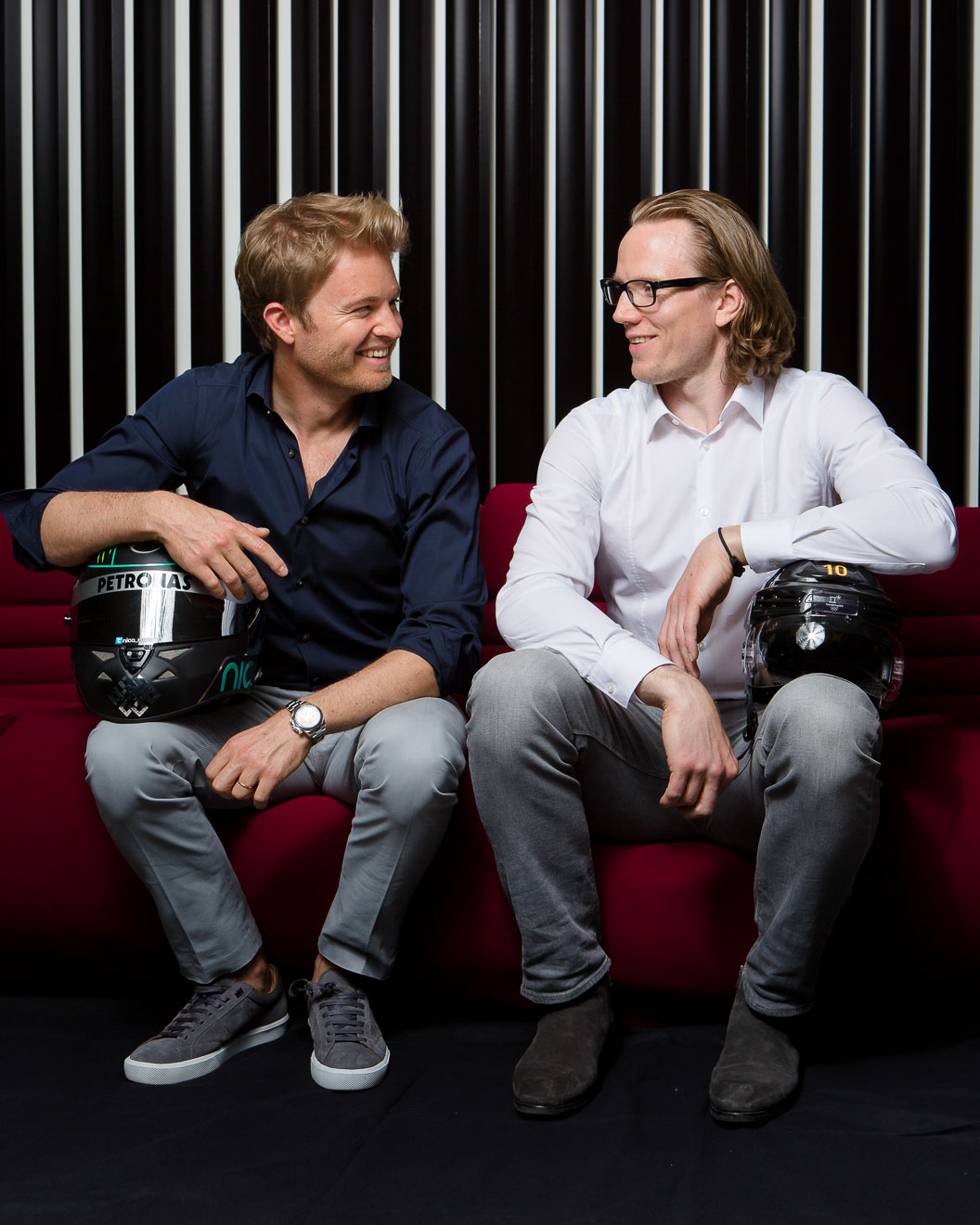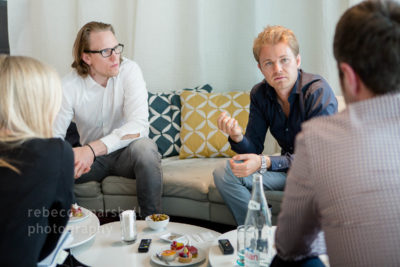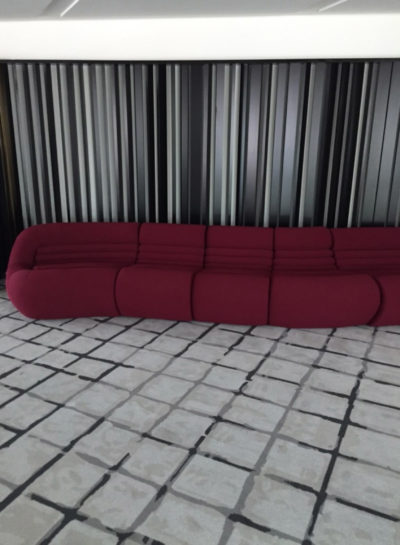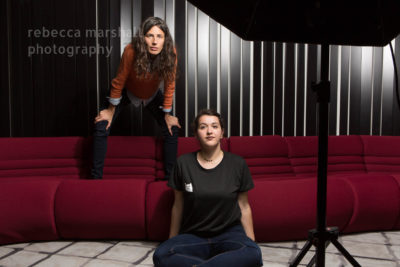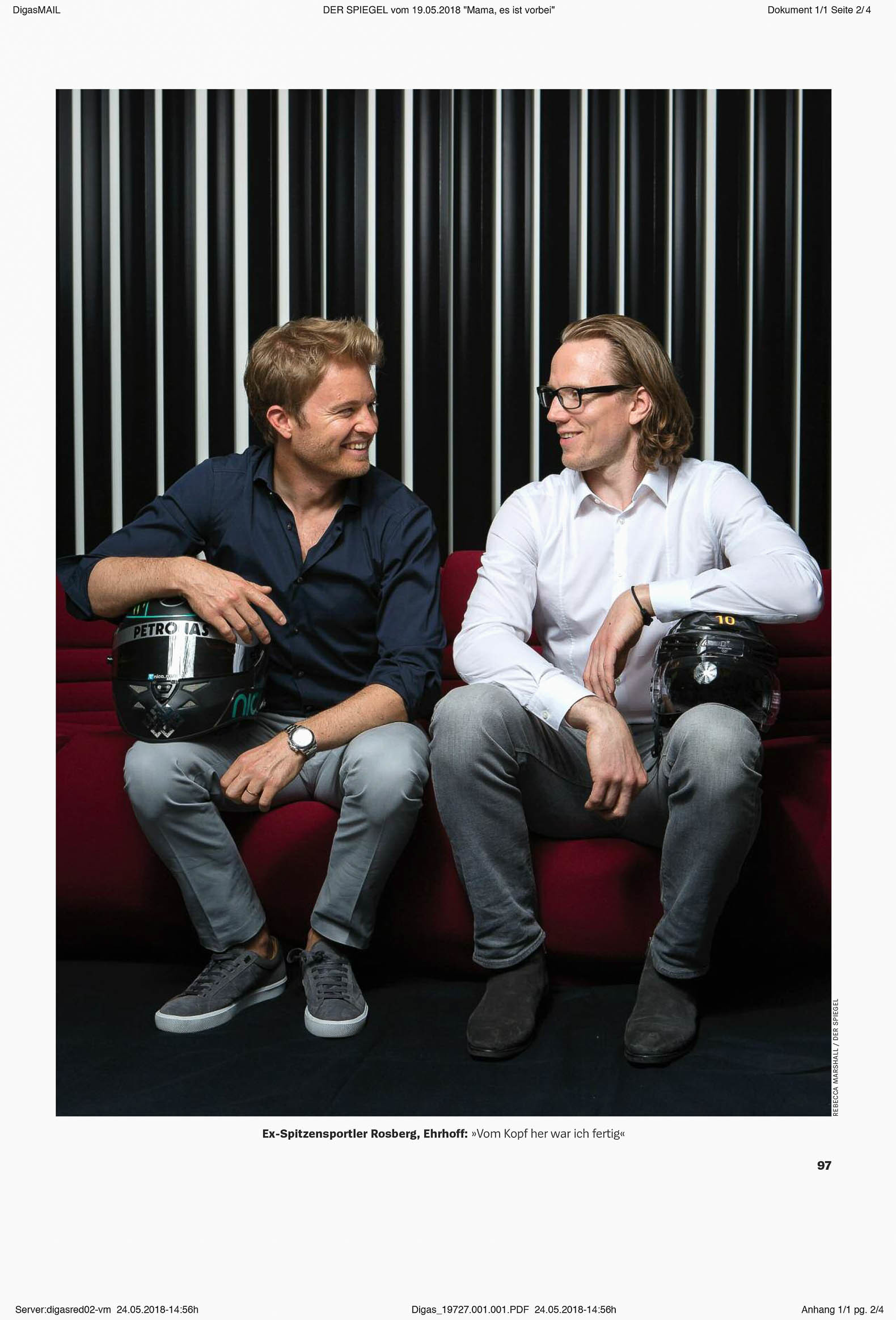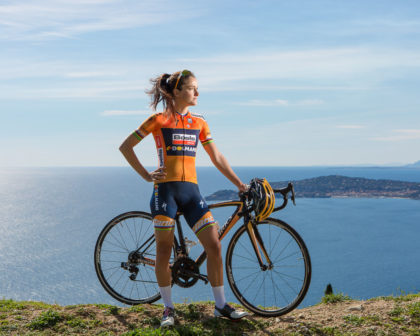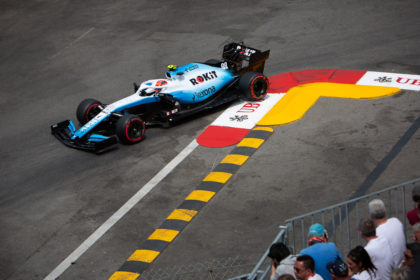Everyone held their breath – PR, assistants, journalists. In an uncharacteristic outburst, I had just barked an order at the kind of man who is not used to being told what to do (let alone by a photographer he has only just met). However, this famous, young racing car driver had just made a fatal error. While I was up a ladder, adjusting a light for the portrait set-up, this 2016 Formula One world champion had, unbeknownst to me, got up out of his position, gone over to my camera and picked it up. Suddenly, I had turned around to see him pressing buttons as he tried to take a peek at the first photos.
Creating entente between strangers
It was a sticky start to this magazine assignment, for which the preparation had already been somewhat complicated. To start with, it was a double portrait, which is generally more demanding than a single portrait (more space is required, and different lighting – not to mention the need to concentrate on the demeanour and position of not one but two subjects simultaneously). Racing car driver Nico Rosberg and ice hockey player Christian Ehrhoff, were high level sportsmen in very different fields.
Not only did they appear to have quite different physiques and characters, they also didn’t know each other at all. I knew that the magazine feature was based on what they had in common – halting their glittering careers due to burn-out – so I would need to create a feeling of connection, an entente of sorts, between the two men in this portrait. The time slot to achieve it would be tight, as it so often is for an editorial portrait photographer on assignment, and the presence of their PR in the entourage wasn’t going to do anything to relax that time pressure.
Blue sky thinking…
Although the portrait was to be shot in Monaco, the feature had nothing to do with the principality. My photographer brief had been quite specific. “Best to set up a plain backdrop“, Der Spiegel photo editor Matthias had said, and the magazine needed vertical photographs, full-body portraits, for this layout. Yet, as I explained, the size of backdrop required for full body portraits of two men would be beyond the capabilities of a mobile backdrop roll that I could transport in my car. Couldn’t we ask them to go from the hotel where the interview was taking place to a photographic studio in Monaco afterwards? “No, that won’t be possible“. I suggested an open, blue sky backdrop as an alternative context, suitable given their decision to break with pressure and structure, and sent Matthias links to my Monaco portrait of Lizzie Deignan and series on freedivers to illustrate the idea. “Yes, that would be great” came back the reply – but this was followed by the news that there wouldn’t be time to drive out of Monaco to an open location. “Do the same thing, but at the hotel“. I knew that finding a viewpoint without background buildings or other distractions would be challenging down in Monaco itself, especially given the need to be at the right angle to the sun to ensure a blue sky. So I arrived with Rebecca ‘Junior’, my assistant, hours before the shoot, to scope out the possibilities and set up.
…Or not
Sometimes Monaco is welcoming to photographers; sometimes it is not. Fortunately, on this occasion, Le Meridien’s Executive Assistant Manager, a Mr Van Kamp, was most accommodating, showing us all the possibilities that the hotel offered – from panoramic views from the roof, to pool-side space. I even found a spot, on a jetty above the beach, from where I could sneak an angle for my portrait with no railings, walls, buoys, coastline or Monte Carlo towers to be seen in the background. However, the South of France weather, normally so reliable in May, decided differently for this portrait location. Grey clouds and showers suddenly replaced blue sky, so instead of a quick report on the planned outdoor set-up, Matthias received a set of phone snaps of various hotel interiors. Together we decided I would work with a rather loud red couch and black-and-white wall decoration (with a plain white wall not far away as backup, in case the men’s outfits clashed with this setting).
By then, the interview was underway in the bar, and the two Spiegel writers, who had flown to Nice for the day, were in full swing. The magazine required some reportage photographs of the men during the interview, which gave me a good chance to get a measure of their physiques, characters, and outfits. The size difference between the two athletes was undeniable. I saw the logic: squeezing behind the wheel of a very small car requires a rather different physique from rushing around bashing, or surviving bashings by, oversize American NHL players (I asked him and yes, ice hockey IS as violent as it looks on TV).
Whatever the reasons, I realised a seated portrait would be essential to minimise these differences: the red couch would stay. Christian was in a white shirt and Rosberg wore a dark one – so the bar-code-style wall would work too. Rebecca Jr got underway, angling the black wall bars to avoid the lights casting shadows on the white stripes between them, and laying down a black cloth to hide the distracting grey carpet. By the time the I had climbed the ladder to adjust a light, and Nico had picked up my camera, I had already had quite a lot going on.
Photographer’s camera and Formula One driver’s helmet
To give Rosberg his due, we generally expect to see instant results from our photos today. Selfies are ubiquitous and, from high-level PR down to personal social media, we carefully control how we appear before posting. “Is that my best side? Do I look good? Is that the image of myself I want people to see?” Differences between phone snaps and a professional photographer’s portrait-making process are not always understood.
To everyone’s relief, after I had shouted “No!!! Put my camera back down immediately!!”, Rosberg just slid smoothly back into position on the couch. Indeed, to his credit, he apologised shortly afterwards: “Sorry Rebecca. I shouldn’t have done that. I know how I feel when someone picks up my helmet“.
Helmet, camera; Formula One racing driver, photographer. For a strange moment, we were on exactly the same page. In any case, if Rosberg’s motivation for checking my camera had been to ensure that he was looking good, there was no need for concern. As Matthias commented on the portrait afterwards when he sent me through the finished page layout: “I think it looks great. Rosberg is very good looking, I must say. The background worked out well, too.”
